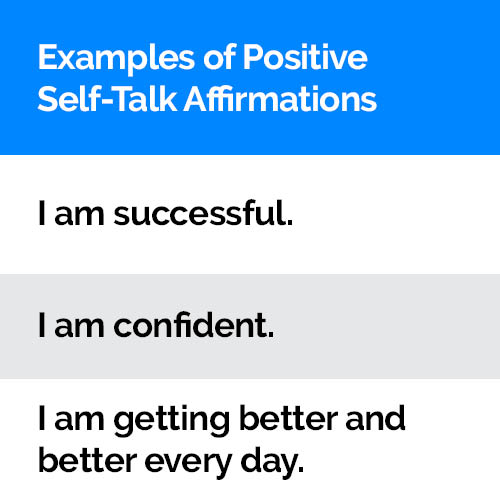Mental Toughness
noun | men•tal tough•ness
A trait that determines your ability to perform consistently under stress and pressure.
When life knocks you down, what is your first instinct? Is it to pick yourself back up and try again? Or would you let that rattle you and give up? Or maybe somewhere in between where your confidence and determination is low yet you begrudgingly move forward?
There will be times you find yourself in high pressure situations or things don’t go as planned, like when you get an objection from an internal or external customer. As a professional in the workplace, you need to be prepared to handle what comes your way.
These situations can cause some nervousness and anxiety, which are natural human reactions in uncomfortable or unnavigated situations.
There is not much we can do to change the way our brain reacts in these situations, but we can prepare for our response and handle them calmly and with a clear head.
Just like when you go to the gym to keep your muscles strong, you need to continue using mental tools and techniques to continuously build up your mental strength.
When you have a strong mentality, you will be more prepared to handle challenges and more inclined to succeed.
Benchmark provides a business focused guide to mental toughness based on Navy SEAL Mental Toughness: A Guide to Developing an Unbeatable Mind by Chris Lambertsen.
Navy SEALs are trained to stay calm under pressure and can keep their fear and anxiety at bay under extraneous life threatening situations.
Fortunately, most of us will not go through the same dangerous experiences, but we can follow their techniques to build our mental toughness throughout our career.
To develop an unbeatable mind, we need to go through the Chris Lambertsen’s 4 Pillars of Mental Toughness.
Pillar 1: Goal Setting
Why is goal setting so important for developing a strong mental attitude?
Goal setting helps you create a guide to where you want to be and clarity on what is important. It also gives you control of where you’re going and how you get there.
Instead of seeing the big picture all at one time, turn your focus toward short-term goals that will eventually add up to your overall end goal. Having laser-focus on short-term goals, allows you to effectively and efficiently complete each step without getting overwhelmed. Effective goal setting is not as easy as saying, “I will be successful.” An effective goal has an action plan and timeline to ensure that you will achieve it. Learn more about effective goal setting here.
Pillar 2: Visual Imagery
What if everything goes wrong? What if you make a mistake? What if they do not like the presentation?
Those are some questions that may run through your head before going into a high pressure situation, like meeting with an important client or presenting in front of your colleagues.
Visualizing yourself in a scenario allows you to slow things down and let yourself go through each step. Breaking down the scene into digestible chunks will allow you to analyze potential challenges and obstacles and give you time to correct and overcome them.
The next time you find yourself going into a high pressure situation, take a moment to slow down. Try a Visual Imagery exercise that will help you go through your thoughts and feel the emotions of the situation.
Remember: See it, feel it, achieve it.
Tips on how to implement each pillar. Download here:

Pillar 3: Positive Self Talk
You probably remember the childhood saying, “Sticks and stones may break my bones, but words can never hurt me.”
To an extent that popular phrase is true, you should not let words hurt you, but sometimes lingering on those words can alter the way you see yourself and your situation, for better or for worse.
We have the power to control our thoughts and use positive self-talk to encourage the right mindset and behaviors to increase our confidence.
By practicing positive self-talk, you will keep those negative thoughts away, and attract positive outcomes.
Pillar 4: Arousal Control
In uncomfortable situations, our bodies have a physical response, like blushing when embarrassed or having sweaty palms when nervous. As much as we try to hide those physical responses, it can be noticed.
You want to get your body and mind back to a calm and controlled state. Some people listen to music or go outside for a breath of fresh air to get back to a normal state. Some even have a mantra that they repeat to themselves.
A technique that the SEALs use is the 424 breathing. That is when you inhale for 4 seconds, hold for 2 seconds, and then exhale for 4 seconds. After exhaling, you repeat the process. This technique allows you to focus on yourself and your breathing while blocking out all external factors.
When you are practicing the 4 pillars of mental toughness, do not get discouraged when you have some setbacks. It is a process that gets better and easier overtime. Just like when you go to the gym regularly, it will take some time to see the results.




